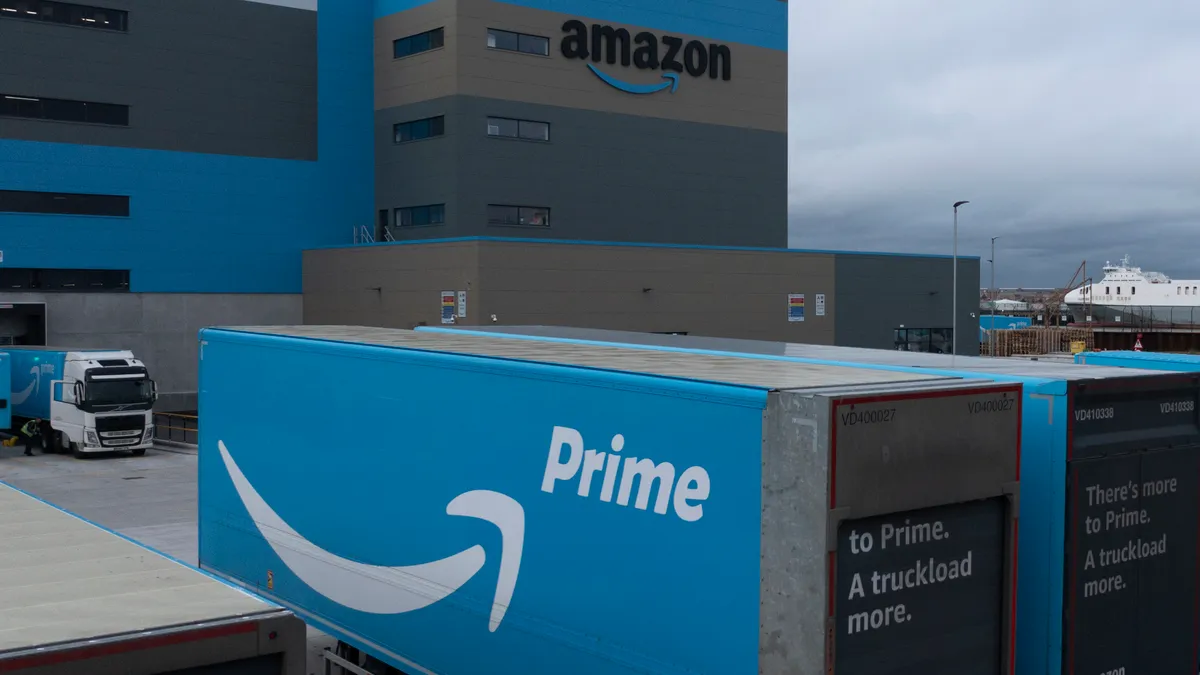Dive Brief:
- Amazon's advertising services generated $9.7 billion in revenue in the fourth quarter, a 32% year-on-year gain, according to an earnings release. This is the first time the company has broken out the specific financials of advertising sales, which used to be folded under its "other" segment, where they made up the lion's share.
- For the full year, Amazon saw about $31.15 billion in ad revenue. Much of that activity is directed at sponsored ad placements, where brands pay to have their products appear in desirable spots around Amazon's e-commerce platform, including search results. But executives emphasized opportunities in video advertising on Fire TV, IMDb TV and Twitch, which are starting to add more premium programming for advertisers.
- Longer-term, the e-commerce giant is trying to round out its tech stack and usability through offerings like its demand-side platform, Amazon DSP. Building out a robust and accessible advertising infrastructure will be important as traditional retail rivals ramp up their efforts to create similar networks.
Dive Insight:
Amazon breaking out its advertising services for the first time is significant, and it's easy to see why the company chose to do it now: The business is booming, putting a tidy bow on a strong period. Amazon saw total revenue hit $137.4 billion in Q4, which includes the critical holiday window. Profit reached $14.3 billion.
Analysts have long speculated that Amazon would eventually convert digital advertising's long-standing duopoly of Facebook and Google into a triopoly. That forecast is more firmly realized as brands seek out networks that can place their marketing messages closer to the point of sale.
Amazon's "other" segment that was mostly comprised of ad sales steadily rose in recent years to be one of the fastest-growing areas of business, occasionally surpassing core categories. Making ads an independent breakout mostly feels like a formality, but it does speak to where Amazon's priorities could be shifting in 2022.
Its ad services are still considerably smaller than those of Facebook and Google, which also reported earnings this week. Google generated more than $61 billion in ad revenue in Q4 — slightly short of double what Amazon saw for the full year — while Facebook drew in $36 billion. But the balance of the scales will likely continue to shift, especially if Amazon's expansion continues on its current trajectory.
Facebook is contending with changes Apple made to mobile identifiers last spring that make it harder to target and measure ads on its apps. A hit to campaign performance on Facebook, including for its fledgling e-commerce products, has pushed marketers to seek out other platforms less affected by the iPhone maker's App Tracking Transparency framework, like Amazon.
At the same time, third-party cookies — another significant means of ad targeting — are expected to be phased out next year. That means categories like CPG that have historically relied on the tactic for digital marketing purposes will be forced to advertise more on networks that wield troves of first-party shopper data, as Amazon does.
That said, Amazon isn't the only company moving quickly on the retail media opportunity. Brick-and-mortar competitors with more substantial store footprints like Walmart and Target are enacting aggressive strategies in this area. Walmart, like Amazon, is trying to develop and scale its own DSP, a key piece of ad tech. Google, too, increasingly looks like a direct competitor.
Amazon has some chips that traditional rivals don't, in more mature e-commerce operations and an extensive network of video offerings on Fire TV, the ad-supported streamer IMDb TV and Twitch, which remains dominant in the user-generated streaming space. Prime Video, which does not run traditional ads, has acquired more premium programming that could attract advertisers. Beginning next season, NFL Thursday Night Football will air exclusively on Prime as part of an 11-year pact, the pro football league's most ambitious gamble on the streaming space to date.
Amazon said it would increase the price of its Prime membership from $119 to $139 per year, the first hike since 2018. One reason for the change was additional perks available under the subscription plan.















